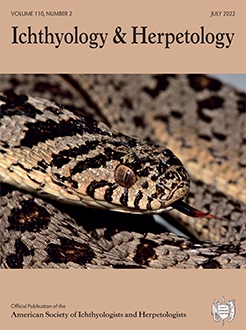Compensatory growth, where an organism can grow faster during recovery from low resource periods, is a mechanism used by a wide variety of taxa to mitigate previous deficiencies. Here we present experimental data to test whether pond-breeding salamander juveniles raised in different quality larval habitats can catch up to larger cohort members after metamorphosis. We reared larval Spotted Salamanders (Ambystoma maculatum) in ponds of differing habitat quality resulting in large size differences at metamorphosis. We then kept juveniles in the lab for a year, fed them ad libitum, and measured their growth at three time points post-metamorphosis. We found large differences in size at metamorphosis related to larval habitat, but salamanders that were small at metamorphosis remained smaller a year later and relative growth rates were equal across all metamorphic sizes. Thus, we have little evidence that juveniles can compensate for small size by growing more in the year after metamorphosis, even in conditions of unlimited food. Our data suggest compensatory growth in amphibians may be species-specific, and that poor quality larval environments may be a disadvantage during subsequent life stages.
How to translate text using browser tools
20 May 2022
Juvenile Salamanders Do Not Exhibit Compensatory Growth Post-metamorphosis in an Experimental Setting
Freya E. Rowland,
Jacob J. Burkhart
ACCESS THE FULL ARTICLE

Ichthyology & Herpetology
Vol. 110 • No. 2
July 2022
Vol. 110 • No. 2
July 2022




